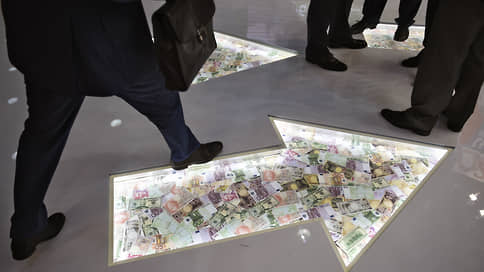The deficit recedes, but does not give up – Newspaper Kommersant No. 61 (7506) dated 04/08/2023
[ad_1]

After a dramatic start to the budget year with its huge deficit that scared analysts, the situation with income and expenses stabilized in March. Separately, a small surplus was recorded last month, which reduced the budget deficit accumulated in the first quarter to 2.4 trillion rubles. Expenses after large-scale advances at the beginning of the year entered a normal rhythm, and revenues (with the exception of non-oil and gas) though did not grow, but at least stabilized. Further, both the created “stash” and external circumstances can help the budget: more expensive oil, a weakening ruble, a new way of calculating oil taxes, a one-time fee from large businesses, unallocated reserves and a “saved” transfer to the Social Fund.
The Ministry of Finance on Friday, April 7, in the already habitually truncated form informed the main results of the execution of the federal budget. By subtracting the January-February figures from the January-March figures (the Ministry of Finance does not provide monthly data for unexplained reasons), we find that separately in March the budget was closed with a small surplus of 183 billion rubles. This outcome is very different from the situation in the first two months of the year. In January, the monthly deficit amounted to 1.65 trillion rubles, in February – 933 billion rubles. As a result of the March “additive” in the first quarter, the accumulated budget deficit decreased to 2.4 trillion rubles.
This, we note, is still a lot. According to the results of the whole year, the target deficit inscribed in the budget law is 2.925 trillion rubles, that is, the annual plan has already been fulfilled by 82%. Compared to previous years, the quarterly deficit of 2.4 trillion rubles. also extremely large. Over the past ten years (2013-2022), according to the results of the first three months, the budget was in surplus six times, in deficit four times, but its size did not exceed 700 billion rubles. (in 2015).
However, taking into account inflation and an increase in the size of the economy, a comparison of nominal amounts over such a long period is not entirely correct – but the Ministry of Finance has not given a more adequate assessment of the deficit as a percentage of GDP since mid-2020.
In a closer comparison – with the same period in 2022 – budget revenues in January-March 2023 fell by 21%, to 5.677 trillion rubles. With non-oil and gas revenues, the situation is better – minus 3.5% compared to last year, a total of 4.042 trillion rubles was collected.
The main tax in this part is VAT, and it received the same amount as a year earlier – 2.693 trillion. The Ministry of Finance explains the general reduction in non-oil and gas fees by the January one-time refund of overpayment of income tax for previous periods.
With taxes from the production and sale of oil and gas, the situation has been consistently bad since the beginning of the year – now it is minus 45% compared to the first quarter of last year. Total oil and gas revenues collected at 1.635 trillion rubles. (more see Kommersant for April 6). The reasons for the collapse are well known – the fall in prices for Russian Urals oil to less than $50 per barrel and the contraction of gas exports after the actual loss of the European market.
The expenditure side of the budget in the first quarter moved in the opposite direction to revenues – spending compared to the same period in 2022 increased immediately by 34%, or 2 trillion rubles, to 8.077 trillion rubles. But the rate of disbursement of money fell by months – from the reports of the Ministry of Finance it follows that in January 3.006 trillion rubles were spent, in February – 2.739 trillion rubles, in March – 2.332 trillion rubles. The agency explains such dynamics by the prompt conclusion of contracts and large advances in the first two months – promising that further spending will be more even. Note that already in March, spending growth slowed to 4.2% by March 2022.
Changes in the execution of the budget are also possible in terms of the revenue side. The authorities expect that against the background of the rise in world oil prices caused by the OPEC + decision, a new formula for calculating oil taxes will work – already in April, taxes to the budget will be calculated from the price of Brent minus $34, then the discount will decrease down to $25.
When substantiating the formula, the Ministry of Finance believed that it would add approximately 660 billion rubles to the budget this year. In the short term, the ruble, which has noticeably weakened recently, can help replenish the budget due to the growth of export earnings. Do not forget about at least 300 billion rubles. a one-time tax collection from large businesses (windfall tax), which, after legal registration, is expected to go to the budget this fall. In addition, the authorities still have an unnamed amount of undistributed reserves in their “stash”, as well as 1.5 trillion rubles released as a result of advance transfers to the Social Fund of certain transfers for 2023 back in December 2022.
[ad_2]
Source link






